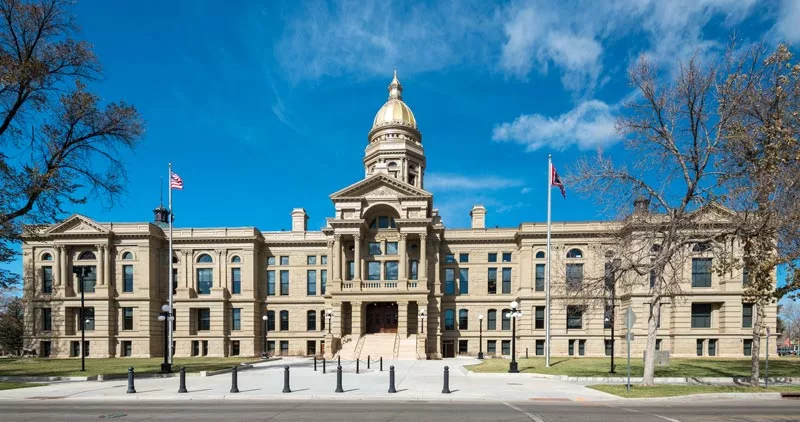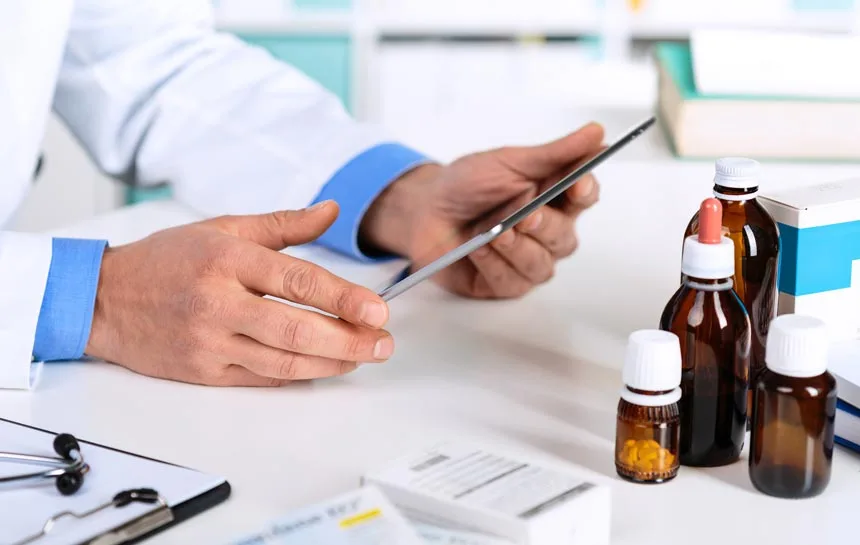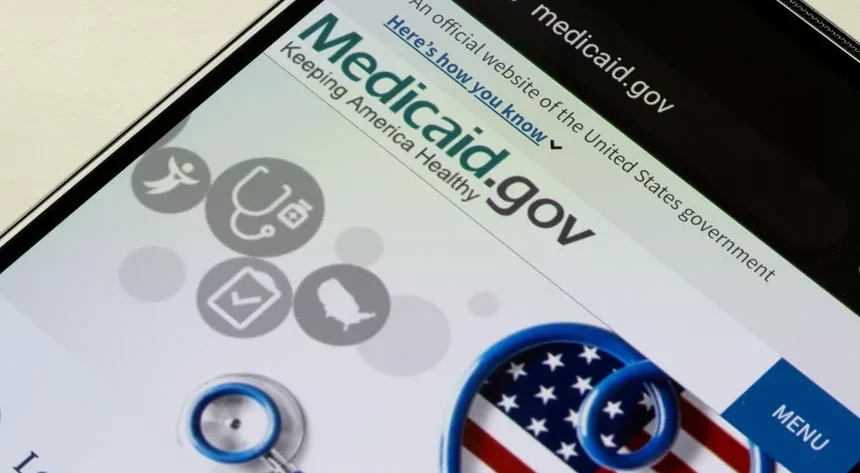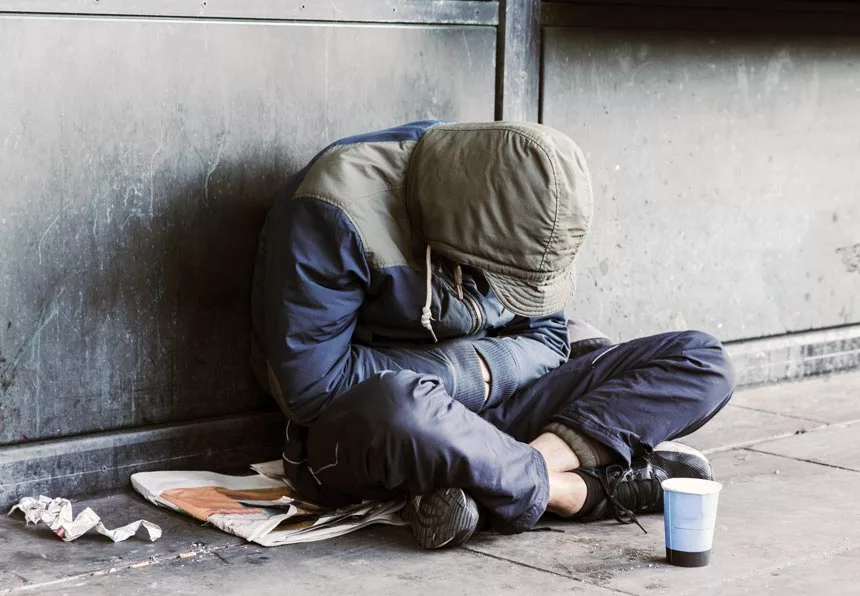Wyoming Rehabs: Find Rehabs In Wyoming Today
Addiction is horrible, but you and your loved one should not have to go through it alone. Professional treatment programs can assist persons who are addicted to various substances. Addiction therapy encompasses multiple levels of care for persons at various stages of recovery, as well as specialty programs for patients with more specialized needs.
Along with deciding to seek assistance, it is critical to locate the most appropriate program and facility for your needs. A program personalized to your or your loved one’s specific requirements and recovery goals may improve your chances of long-term recovery.
This guide was created to answer concerns and provide guidance for the many Wyoming residents who are battling with addiction so that they can get help as soon as possible.
Drug and Alcohol Addiction in Wyoming
In a given year, some 73,000 people in Wyoming use illegal substances (12.63 percent of the state’s population), and another 30,000 people (5.19 percent) abuse alcohol. As a result, between 2008 and 2017, drugs and alcohol contributed to 20.95 percent of all fatalities in Wyoming, which was more than eight percentage points higher than the 12.71 percent national average for the same period.
At over 10 points above the national average, Cheyenne, Wyoming’s most populous city, reported a 22.35 percent drug- and alcohol-related fatality rate. The need for drug rehabs centers in Cheyenne Wyoming is clear, and only growing in recent years!
This resource was developed to help people in Wyoming who are struggling with substance abuse and addiction find treatment that is both inexpensive and likely to lead to recovery. Additionally, it aims to inform the public on the risks associated with substance abuse in Wyoming.
If you need assistance finding a rehabilitation center in Wyoming, you can contact our addiction navigators to help you get low-cost, high-quality care right away.
Wyoming Alcohol And Drug Rehab Centers

Countless Wyoming residents are worried about the growth in opiate and heroin addiction. The number of drug-related overdoses in the state currently exceeds the national average.
According to the Wyoming Division of Criminal Investigation, the number of investigations involving heroin and prescription restricted narcotics has more than doubled in recent years.
Wyoming’s recent heroin crisis has been connected to years of prescription painkiller usage. Individuals can get dependent on pain relievers and begin taking them for non-medical purposes over time. Some medications were more difficult to obtain after Wyoming lawmakers tightened prescription medication restrictions.
As a result, some people began stealing prescription pills, going doctor shopping, or even turning to heroin as a more convenient alternative.
The most prevalent methods of illegal narcotics entering Wyoming are via private vehicles, commercial trucks, and buses. Interstate 25 runs from southern New Mexico to northern Wyoming, and it is frequently utilized by Mexican drug trafficking organizations (DTOs) to transport heroin, methamphetamine, and cocaine. Interstate 90, the country’s longest interstate route, also runs through Wyoming’s northeastern section.
This is commonly utilized to carry drugs from one state to the next, transporting substances from major warehouses in New York City and Chicago to Wyoming towns.
State agencies have spent the last few years focusing on raising awareness about substance abuse and recovery. As a result, more Wyoming citizens are seeking treatment at addiction treatment centers across the state.
Although marijuana is the most commonly mentioned substance in addiction treatment programs, other rehab admissions do occur, for substances such as:
How To Find & Choose Substance Abuse Treatment In Wyoming

The Wyoming Department of Health’s Behavioral Health Division oversees addiction treatment services all through the state. If you live in Wyoming and are looking for treatment for a substance use disorder, you can do so by doing the following:
- Making use of the Substance Abuse and Mental Health Services Administration’s (SAMHSA) Behavioral Health Treatment Locator
- Contacting Find Addiction Rehabs team of recovery representatives
Finding the correct rehab facility for your requirements might be difficult when you examine your treatment alternatives. Consider the following aspects to guarantee you get the care you require:
- Accreditation: Addiction treatment clinics with national or state accreditation adhere to the highest quality standards of care.
- Licensed drug and alcohol counselors: All service providers at the treatment center must be licensed by the state of Wyoming.
- Evidence-based services: Treatment institutions should provide evidence-based treatments, such as cognitive-behavioral therapy, that have been proven successful via research.
- Co-occurring disorders: If you have both substance abuse and mental illness, dual-diagnosis treatment will treat both issues in the same program.
- A continuum of care: Attending a health care institution that provides a complete continuum of care allows you to form established, trusted connections with your treatment providers.
Other key factors to consider are the length of the treatment program, if the programs correspond with your personal treatment goals, the cost of treatment, and accepted payment options.
Options for Alcohol & Drug Rehab in Wyoming

Rehab centers all over Wyoming offer different levels of care for addiction treatment, including:
Medical Drug & Alcohol Detoxification
Medical detoxification is the initial stage in the treatment process for many people who battle addiction. Without medical supervision, withdrawal symptoms can be deadly, and detox clinics are designed to provide 24-hour care during the withdrawal process.
During detox, you may also receive medicine to help with withdrawal symptoms, as well as behavioral support to prepare you for subsequent treatment.
Residential/Inpatient Drug Rehab
A stay at a residential treatment facility provides you with a valuable opportunity to focus exclusively on healing and recovery rather than daily life commitments.
When you enter residential treatment, you will have 24-hour access to a number of proven addiction treatment modalities, including individual counseling, cognitive-behavioural therapy, group sessions, wellness sessions, and more.
Outpatient Addiction Treatment
Outpatient treatment is an ambulatory service for people who are unable to commit to residential treatment or who have recently finished an inpatient term.
Most rehab facilities include a variety of outpatient treatment options, including intensive outpatient programs (IOPs), partial hospitalization programs (PHPs), and normal outpatient treatments. Many of the same services are provided by IOPs and PHPs as inpatient treatment.
Medication-Assisted Treatment
If you have an alcohol or drug addiction, your provider may incorporate medication-assisted treatment (MAT) in your treatment plan.
To improve the treatment process, MAT combines approved drugs such as buprenorphine, methadone, or naltrexone with behavioral therapy.
Addiction Aftercare and Establishing Sober Supports
Your lifelong recovery journey begins when you complete a structured rehab program. Your treatment provider will collaborate with you to create an aftercare plan that will give you continuous access to important support systems and services to help you avoid relapse.
The majority of treatment institutions include a variety of aftercare treatments, including:
- case management
- group therapy
- 12-step participation
- transitional/sober-living housing
- other relapse-prevention services
The Basics on Drug Laws in Wyoming

Illicit substances, including their possession, distribution, and manufacturing, are strictly outlawed in Wyoming. You will face harsh legal consequences depending on the sort of substance and the amount involved.
Substances are classified into five schedules based on their potential for abuse and damage. Schedules I and II include narcotics with a high risk of addiction, such as heroin, cocaine, methamphetamine, and opioids. The remaining schedules, III, IV, and V, contain medications with a lower dependency risk, such as codeine, certain stimulants, and antidepressants.
Marijuana Laws In Wyoming
While both medicinal and recreational marijuana use is prohibited in Wyoming, the state has established a medical cannabidiol (CBD) law. CBD should only be used to treat severe, debilitating epileptic symptoms, and it should include a high percentage of CBD and a low percentage of THC.
Possession and cultivation charges are typically less harsh than distribution ones, but all penalties are aggressively enforced. Furthermore, if you are caught with marijuana within 500 feet of a school, the fine will be increased by $500.
Addiction Treatment Laws In Wyoming
With an increase in substance misuse cases in Wyoming, state officials have established a number of harm reduction regulations to assist keep neighborhoods safe.
Harm reduction laws consider the entire individual rather than just the addiction. The laws prioritize the health and well-being of individuals and communities by providing resources for prevention and recovery.
Wyoming Prescription Drug Take Back Program
The Wyoming Department of Health collaborates with local organizations and pharmacists to educate residents on how to appropriately dispose of unused or expired pharmaceuticals. Wyoming’s prescription drug take-back program keeps drugs off the streets and contributes to a cleaner environment.
Some people in Wyoming utilize prescription pain relievers for non-medical purposes. Seven out of every ten of those folks received the medication from a family member or acquaintance within the last month.
Lock boxes are installed around Wyoming allowing consumers to dispose of their prescription drugs secretly and safely. In a properly labeled take return box, place any unused or expired prescription pharmaceuticals, prescription patches, medications, ointments, over-the-counter medications, vitamins, and pet medications.
Be aware that liquids, inhalers, aerosol cans, lotions, and needles are not accepted in drop off boxes.
Prescription Drug Monitoring Program (PDMP) In Wyoming

Wyoming reported five prescription drug-related deaths between 2004 and 2005. Less than a decade later, in 2012 and 2013, the number of prescription drug-related deaths increased to 116. Lawmakers expect that stronger rules on the state’s prescription drug monitoring (PDMP) program will aid in the reduction of prescription drug addiction.
Wyoming’s prescription drug monitoring program (PDMP) attempts to minimize substance misuse by providing a safe manner to administer controlled dangerous substances (CDS).
Wyoming’s PDMP has been collecting data on medications in schedules II-IV that are prescribed and dispensed since 2004. This data is accessible to health doctors and pharmacists, who can review patient medication histories and look for signs of substance misuse. The Wyoming PDMP, in addition to detecting suspected substance addiction, allows clinicians and pharmacists to:
- Detect drug diversion.
- Provide better overall patient care.
- Identify insurance fraud.
- Educate the whole public about the dangers of misusing prescription drugs.
High-Intensity Drug Trafficking Area (HIDTA) Program In Wyoming
Wyoming’s rural geography and closeness to major roads make it an attractive target for drug traffickers. As a result, Albany, Laramie, Campbell, Natrona, Sweetwater, and Uinta counties are members of the Rocky Mountain High-Intensity Drug Trafficking Area (HIDTA) program.
IDTA aims to educate the public about drug abuse, particularly marijuana abuse. Federal, state, and municipal governments create programs to combat drug trafficking along important roadways.
Agency activities are able to stop hazardous drug cartels by utilizing information exchange networks and cutting-edge technologies.
Several initiatives implemented by the Rocky Mountain HIDTA include:
Wyoming Highway Patrol: Detects drug trafficking activities on Wyoming highways and interstates. Targets drug smugglers and transporters via routes that run through various Wyoming cities.
Wyoming Regional Enforcement Teams: Throughout Wyoming, different teams are given to specific regions, such as a central squad, a northeast team, a southeast team, and a southwest team. Concentrate on methamphetamine, cocaine, and marijuana drug initiatives.
U.S. Postal Interdiction Program: Aids in the identification of narcotic items supplied over the mail. It also detects money shipments from various narcotics organizations.
Finding Addiction Treatment Centers In Wyoming

Wyoming treatment clinics provide a variety of substance misuse services, including inpatient and outpatient rehab, individual counseling, support groups, medication-assisted therapy, and halfway houses. While state financing for addiction treatment is limited, many rehab facilities accept private insurance coverage and provide payment choices for individuals in need.
In addition, the state provides a Court Supervised Treatment Program (CST Program), which assists nonviolent drug offenders in breaking the harmful cycle of addiction. CST programs in Wyoming include drug testing, counseling, addiction and recovery professional training, group therapy, and job placement.
Before being eligible for graduation, each participant must satisfactorily finish at least 12 months in the program.
Wyoming’s Court Supervised Treatment Program (CST Program) provides drug offenders with addiction treatment services. Each CST Program makes an effort to decrease repeat offenses and promote participant sobriety.
How Much Rehab Cost in Wyoming?
Substance abuse treatment programs are essential for those battling with a drug or alcohol addiction. Drug treatment can be expensive for some people, as programs can range from taking private health insurance to costing a lot of money.
While many people are covered across the country, there is still a segment of the population who does not have health insurance, which might limit access to drug and alcohol rehab services. Fortunately, drug treatment options have expanded, allowing people to access care regardless of their financial situation.
It is critical to understand all of your alternatives in order to pick the ideal program for your needs, including addiction and financial responsibility.
Paying for Treatment with Medicaid in Wyoming

Due to the state’s small population, Wyoming has a higher than average rate of uninsured residents. This has an effect on premiums, making them significantly more expensive. The state has resisted Medicaid expansion, which is partially to blame for the state’s high uninsured percentage.
Many residents receive a subsidy to help them afford their premiums, but many do not receive any aid for affordable health care. Wyoming is one of just twelve states that have yet to embrace Medicaid expansion. Typically, Medicaid can be used to pay for some drug and alcohol rehab programs, but without Medicaid support, some Wyoming residents cannot afford drug treatment. In the state, sliding scale or cash-pay schemes are offered to make some options more reasonable for drug users.
Using Private Insurance to Pay for Drug Rehab in Wyoming
A private health insurance policy can be used to pay for a substance abuse treatment program. Basic drug and alcohol addiction services are covered by all health insurance plans. This can include drug rehabilitation programs, outpatient care, and other services. The health insurance company will only cover the charges of selected drug rehabilitation institutions. It is critical to understand which programs are covered as well as what your coverage will cover.
Even within the same health insurance carrier, this can vary from policy to policy. Out-of-pocket fees are common, and your insurance provider should be able to explain them to you. Private health insurance coverage provides patients with more options for drug treatment therapy, which is an important step toward overcoming drug addiction.
Wyoming’s health marketplace lists the following insurers as being available:
- UnitedHealthcare
- Blue Cross Blue Shield of Wyoming
- Mountain Health Co-op
- Kaiser Permanente
- Humana
- Cigna
- Aetna
- Ambetter
Substance Abuse and Rehab for At-Risk Groups
Substance Abuse Treatment for Veterans
Veterans face unique issues that place them at a higher risk than the general population of acquiring a substance use disorder (SUD). Post-traumatic stress disorder (PTSD) is the main factor contributing to this increased risk, but other factors like unemployment, homelessness and persistent pain may also be at play. Additionally, the issue is cyclical since people with drug use disorders, particularly veterans, are more likely to get PTSD.
As of early 2019, the National Center for PTSD at the U.S. Department of Veterans Affairs estimates that one in three veterans receiving treatment for addiction also has a PTSD diagnosis. In a similar vein, one in four troops with PTSD also have a substance use disorder. Additionally, among veterans of the wars in Iraq and Afghanistan who receive medical care at a VA facility, one in ten has a substance use disorder.
However, there is hope for veterans with substance use disorders since they have access to additional treatment choices for SUDs or SUDs that co-occur with PTSD, and VA benefits typically cover the cost of this therapy.
More Resources for Teachers and Parents in Wyoming
The Substance Abuse Preventive Program (SAPP), run by the Preventive and Health Promotion Unit of the Wyoming Department of Health, sponsors community-based prevention initiatives.
Dual Diagnosis Treatment Centers in Wyoming
The term “co-occurring substance use and mental health disorders” refers to the frequent coexistence of substance abuse and mental health issues.
The Substance Abuse and Mental Health Services Administration (SAMHSA) reports that in 2017, 18.3 percent of people with a mental health illness also had a substance use disorder, and 45.6% of those with a substance use disorder also had a mental health issue.
Mental Health Resources & Treatment in WY

If you or someone you care about is suffering from a mental health problem, such as depression, PTSD, eating disorders, or severe anxiety, there are numerous options available to assist you.
Here are a few options for getting quick help, as advised by MentalHealth.gov:
Services from the Wyoming Department of Health
The Wyoming Department of Health website has an area devoted to educating the general public, particularly veterans and their families, on mental health treatment and alternatives.
National Alliance on Mental Illness (NAMI) Wyoming Chapter
The Wyoming branch of NAMI provides data on mental health services around the region, including a segment on educational programmes for relatives and carers of teenagers; veterans can get aid on the NAMI national website.
Dual-diagnosis treatment facilities may be helpful for people who have both drug or alcohol addiction problems and mental health problems. Select the relevant filter in our tool above to find rehab facilities that offer treatment plans designed to address the particular issues brought on by co-occurring substance use and mental health illnesses.
Finding Addiction Aftercare Resources in Wyoming
Although it is a crucial step in the recovery process, substance abuse aftercare treatment is occasionally overlooked. People who try to carry on with their lives without receiving additional care in an aftercare setting greatly increase their risk of relapsing after rehab.
A variety of aftercare options are available for recovering addicts, including group therapy, follow-up sessions for ongoing therapy, and sober living facilities. Long-term participation in aftercare programs greatly enhances the success of rehabilitation efforts, according to study.
Wyoming 12-Step meetings for addiction

There are now many 12-step groups for different addictions and disorders, with Narcotics Anonymous (NA) being only one example. Alcoholics Anonymous (AA) originated the 12-step technique for those recovering from alcohol addiction, but it has now been adopted by many other organizations.
Sober Living Homes in Wyoming
Group homes that help recovering addicts move from treatment facilities to independent living while keeping their sobriety are known as sober living houses (also known as recovery residences). People who don’t have a supportive and joyful environment to live in after leaving a rehabilitation institution may benefit greatly from these homes.
Because these facilities frequently have a zero-tolerance drug and alcohol policy, residents can stay for a few months to several years in a sober living home as long as they abide by the house rules and don’t relapse. Additionally, residents are required to complete tasks, participate in mutual support organizations, and pay an equal portion of the rent.
Important Signs of Substance Abuse Problems
When seeking to comprehend drug addiction concerns in a certain place, researchers and policymakers look at “key indicators.” Key indicators can offer profound insight into which substances represent the greatest risks and which populations are most affected by substance abuse when paired with usage information.
Below, relevant information and key signs of Wyoming’s substance abuse problems are discussed.
Wyoming’s Mental Illness Problem
As was said before in this article, there is a significant connection between substance use issues and mental health disorders. Co-occurring drug use and mental health disorders, also referred to as a “dual diagnosis,” are when a person experiences both of these issues at the same time. As a result, we may be able to gauge the level of substance use by looking at how common mental health issues are in a certain state.
In comparison to the national average of 4.6 percent, 4.8 percent of Wyoming residents aged 18 and over had a significant mental illness in 2017–2018. Compared to the national average of 7.1 percent, adults in Wyoming suffered a major depressive episode at a rate of 7 percent in the previous year.
Wyoming’s Rate of Suicide
A leading cause of death in the United States, according to the Centers for Disease Control, is suicide. In almost every state, the suicide rate rose between 1999 and 2016, rising by more than 30 percent in half of the states. Substance abuse and suicide are frequently linked. According to the US Department of Health and Human Services, substance abuse is a major risk factor for both adults and teenagers who attempt and/or commit suicide, and this is particularly true for at-risk groups.
Additionally, there is a complex and nuanced link between substance abuse and suicide. Drug addicts are more likely to kill themselves because they are more likely to experience depression, impulsive behavior, and other issues with relationships, finances, illness, or unemployment. Between 1999 and 2016, Wyoming saw a 39 percent increase in suicides. In terms of suicides per 100,000 people, Wyoming was third in the nation in 2017.
Wyoming’s Opioid Prescription Rate
In America, the misuse of prescription medications, particularly the abuse of opioids, has reached pandemic proportions. The Centers for Disease Control and Prevention studied the variation in opioid prescriptions across states and discovered a direct correlation between an increased level of opioid prescriptions and a higher risk of dependence and abuse, even though it is difficult to estimate how many people use these drugs as prescribed and how many abuse them.
In the United States, doctors prescribed 191 million opioids in 2017. As a result, one in every four individuals who start long-term opioid medication develop an addiction.
Due to the growth of the opioid epidemic and the recognition of the role that excessive opioid prescriptions have played in this pandemic, the opioid prescribing rate in the United States has been steadily dropping for several years after peaking in 2012. In the United States, the rate of opioid prescriptions decreased from 78.1 per 100 residents in 2013 to 58.7 per 100 residents in 2017, a decrease of 24.84 percent.
Wyoming’s opioid prescribing rate decreased from 81.5 per 100 residents in 2013 to 64.8 per 100 residents in 2017, a loss of 20.49 percent, during that time period, remaining consistently higher than the national prescribing rate.
Wyoming’s Rate of Homelessness

A community’s risk of drug abuse issues is increased by a high percentage of homeless people. Both the cause and the effect of drug abuse have been linked to homelessness; some persons experience homelessness as a result of a substance use problem, while others who are already homeless commonly use drugs to ease the pain and despair of their situation.
The 2018 Department of Housing and Urban Development (HUD) Point-in-Time Count estimates that there are around 552,830 homeless persons living in the US, or 17 out of every 10,000 people. This number represents a decrease of 4.1 percent from 2014, when there were around 576,450 homeless people living in the United States. In addition, since HUD started compiling statistics on the homeless population in 2007, there has been a 15% decrease in homelessness in the United States.
In contrast, Wyoming had 639 homeless people in 2018, which is more than half the national average and equals 11 homeless people for every 10,000 residents of Wyoming. This number is a 15.59 percent decrease from Wyoming’s 757 homeless individuals in 2014.
Traveling to Wyoming for Rehab
Cheyenne, Wyoming’s capital city, presents Cheyenne Frontier Days, the country’s largest outdoor rodeo. During the last week of July, professional bull riding, cow roping, barrel racing, and other sports are held.
Wyoming is the country’s smallest state, with high plains to the east and Rocky Mountain ranges and foothills to the west. This is why many people contemplate traveling outside of their home states to participate in adventure therapy, which combines healing with bonding activities.
Treatment Center Accreditations in Wyoming

Now that you’ve learned about the many sorts of treatment and how they’re paid for, it’s time to talk about reputation. To get the most out of your therapy, ensure that the facility is properly regulated and accredited.
Any medical detox center should be licensed by the hospital licensing body or the state health department. Treatment that is effective should address mental health with skilled specialists and be licensed by the state mental health or substance addiction agency.
Facilities that go above and beyond should be accredited voluntarily by The Joint Commission or CARF.
Find Wyoming Alcohol and Drug Rehab Centers Now
Substance abuse treatment is available in Wyoming to everyone who needs help conquering an addiction; you do not have to suffer alone. To determine if you have coverage or discuss options confidentially, contact Find Addiction Rehabs’ dedicated recovery representatives.
If you do not have insurance or fear you are unable to pay for therapy, keep in mind that numerous low-cost rehabilitation programs can help.
When researching treatment programs in and out of state, keep an open mind. This will allow you to find a treatment center that offers the amenities and therapies required for long-term recovery.
Help is available no matter where you live. If you’re ready to talk about recovery options, contact Find Addiction Rehabs now!


